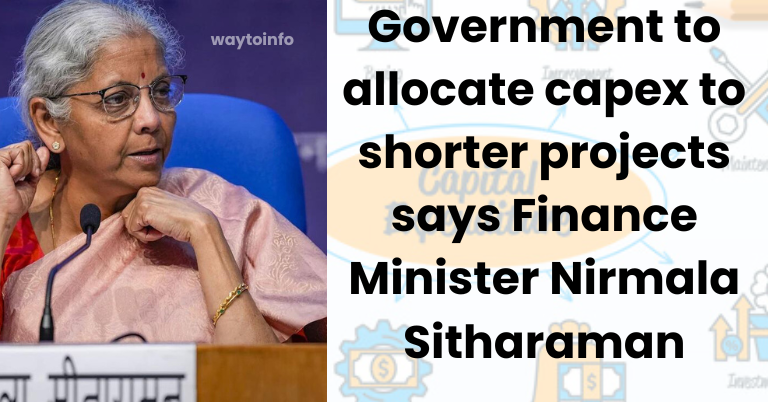Finance Minister Nirmala Sitharaman announced that the government intends to invest in projects of shorter duration. This decision is aimed at maximizing the utilization of the record-high capital expenditure allocated in the interim budget, with a focus on accelerating the development of the country’s infrastructure.
In a Mint interview, Sitharaman mentioned that while numerous capex projects have extended gestation periods of 24 to 36 months or even more, the finance ministry’s monitoring indicates that optimal project development occurs when the capital expenditure is utilized within a 12-month timeframe. capital expenditure is typically directed towards long-term or medium-term projects. This funding is intended for the creation of assets spanning 24 to 36 months or even longer. However, the stipulation is that the expenditure must occur within 12 months. Through my monitoring, it is evident that those who complete capex within this timeframe have excelled, effectively utilizing the allocated funds,” stated the finance minister.
The interim budget has increased the central capex allocation for the fiscal year starting on April 1 by 11.11%, reaching ₹11.11 trillion. This boost aims to facilitate the development of infrastructure projects and stimulate economic growth, continuing the trend of significant increases in recent years. However, while capex has risen for FY25, the growth rate is comparatively slower than in previous years. Capex experienced a growth of 37% in FY24 compared to the previous year’s Budget Estimate (BE), 24% in FY23, and 40% in FY22. – Finance Minister Nirmala Sitharaman
Government to allocate capex to shorter projects says finance minister.
The finance minister clarified that the decrease in capex growth is not attributed to a decline in the absorption capacity of implementing agencies. Instead, it is explained by the fact that capex levels were already elevated, and any further increase would now be proportionate. Capital expenditure increased from ₹3 trillion to ₹10 trillion in the last few years. The growth, considering the higher starting point, will be proportional. An 11% increase from this elevated base is significant, with ₹11 trillion constituting a substantial amount, equivalent to approximately 3.4% of the GDP,” stated the finance minister.
She noted indications of a revival in private-sector investment, particularly in emerging sectors like renewables and those benefiting from productivity-linked incentive (PLI) schemes. investments are flowing into these sectors. There are clear signals of growth. However, if the focus is solely on traditional areas like cement and aging steel factories, then the upswing in investment is still pending,” remarked Sitharaman.
She mentioned a rise in state capital expenditure, highlighted by the augmentation of central credit accessible to them through the 50-year interest-free special assistance scheme, reaching ₹1.3 trillion. Sitharaman noted the impressive completion in the first two years, achieving the full outlay. She further stated that this year, states might utilize the scheme to conclude projects that had already made substantial progress with funds from the union government over the past two years.

